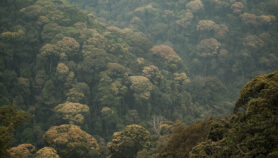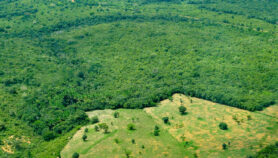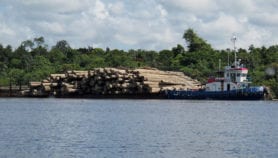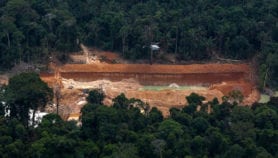Send to a friend
The details you provide on this page will not be used to send unsolicited email, and will not be sold to a 3rd party. See privacy policy.
Below is a round up of news from or about South Asia for the period 1–15 September.
Tsunami warning system passes test
The US$130 million Indian Ocean tsunami warning system passed a major test during the earthquakes that rocked Indonesia on 12–13 September. The system — expected to be fully operational at the end of 2008 — issued its first alerts after five minutes and reached governments as far away as Bangladesh and Kenya, report the Associated Press. More>>
‘Hardy’ rice uses water more wisely
A new type of rice that uses water more efficiently than existing rice crops has been developed by an international research team, including scientists from India, Indonesia and Mexico. The rice carries a gene for drought and salt tolerance from the Arabidopsis plant. The research was published in the Proceedings of the National Academy of Sciences. More>>
Climate change affects monsoon rainfall
Analysis of a 27 centimetre long stalagmite has provided a 900-year (from 600 to 1500 AD) record of climate-related changes in rainfall from India’s summer monsoon. The rock formation, from a cave in central India, suggests periods of substantially reduced monsoon rainfall that correlate with historical accounts of droughts and famines. More>>
Goat protein helps test for buffalo disease
Researchers have developed a test based on a goat protein to help screen buffalo herds for Johne’s disease, a contagious and usually fatal bacterial infection. Developing countries with large buffalo populations often lack diagnostic tests for the infection. The results of pilot studies conducted in northern India were published in Comparative Immunology, Microbiology and Infectious Diseases. More>>
Indian researchers map malaria ‘chaperones’
Researchers at the Indian Institute of Science have constructed a network of 95 ‘chaperone’ molecules for the malaria parasite. They say this provides, for the first time, a rational basis for the antimalarial effect of known drugs and highlights new proteins that could potentially be used in the fight against malaria. The study was published in PLoS Computational Biology. More>>
High water arsenic levels pose ‘substantial risk’ of lesions
People exposed to more than 50 micrograms of arsenic in drinking water are at "substantial" risk of developing skin lesions, concludes a study published in the Bulletin of the World Health Organization. The study attempts to resolve conflicting data from recent studies in Bangladesh and India on arsenic levels and lesion risk. More>>
India launches communications satellite
India has launched its Insat-4CR communications satellite from Sriharikota, a tiny island in the Bay of Bengal, using the locally-made Geosynchronous Satellite Launch Vehicle. The 2,130 kilogram satellite — the heaviest launched on Indian soil — will provide direct to home television services and aid television news broadcasting. More>>
Kathmandu valley air pollution analysed
Researchers from India and Nepal have conducted a detailed statistical analysis of rising air pollution over the Kathmandu valley, linked to increasing vehicle emissions and the nature of land use in the area. They say the study, published in Current Science, is the first such analysis of the urban air in Nepal and could help regulatory authorities track pollution. More >> ![]()
Pakistan scientists create low-fat pizza cheese
Scientists in Pakistan have produced a low-fat pizza cheese by blending dried flour made from vetch with skimmed milk powder. Lentil-like vetch seeds are normally toxic, but the technique, published in the International Journal of Food Science and Technology, involves extensive detoxification and drying of the legume flour before mixing it with milk powder. More>>
Indian and Nepali crocs under threat
The gharial crocodiles of India and Nepal are critically endangered due to habitat destruction, according to the World Conservation Union. The Union’s 2007 Red List of Threatened Species says crocodile numbers have shrunk by 58 per cent and their habitat to two per cent of its former size. More>>
Tigers reappear in Indian tropical rainforest
Tigers have been found in a tropical rainforest in Maharashtra state, western India for the first time in 30 years. The Wildlife Institute of India say at least 20 tigers have been spotted, according to Reuters. More>>













